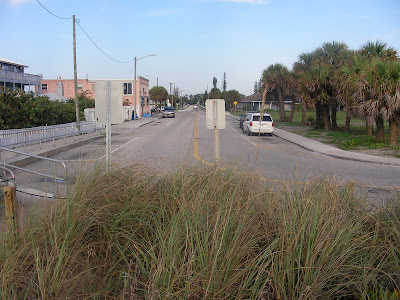
.JPG)
The party's over - at least for now! The beach renourishment project that was underway on our stretch of beach south of the jetty has now been completed. That was quick! However, unlike other years when they have done a "full" beach renourishment that covered approximately one mile south of the jetty (seen in the photo), they only did a few hundred yards south of the jetty this year . That was the most critical area to renourish, however, since the extent of the erosion was almost up to the jetty park boardwalk and had started to destroy the sea grass that was planted and growing near that boardwalk. The renourishment crew did level out the beach for about 1 mile south from the jetty, so it should make it easier for any sea turtles to climb up on the beach now and lay their eggs.
. That was the most critical area to renourish, however, since the extent of the erosion was almost up to the jetty park boardwalk and had started to destroy the sea grass that was planted and growing near that boardwalk. The renourishment crew did level out the beach for about 1 mile south from the jetty, so it should make it easier for any sea turtles to climb up on the beach now and lay their eggs.
 . That was the most critical area to renourish, however, since the extent of the erosion was almost up to the jetty park boardwalk and had started to destroy the sea grass that was planted and growing near that boardwalk. The renourishment crew did level out the beach for about 1 mile south from the jetty, so it should make it easier for any sea turtles to climb up on the beach now and lay their eggs.
. That was the most critical area to renourish, however, since the extent of the erosion was almost up to the jetty park boardwalk and had started to destroy the sea grass that was planted and growing near that boardwalk. The renourishment crew did level out the beach for about 1 mile south from the jetty, so it should make it easier for any sea turtles to climb up on the beach now and lay their eggs.The photos show the area where an attached chart references coordinates that were taken "before" and "after" the current renourishment. It's only a few "degrees" of longitude on the chart, but it makes a world of difference in the real world!









